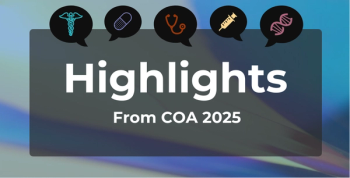
Evinacumab Brings Cholesterol to Near-Normal Levels for Patients With Rare, Inherited Condition
Patients with homozygous familial hypercholesterolemia saw average reductions in low-density lipoprotein cholesterol of 47.1% over 24 weeks. Reductions began to appear as early as 2 weeks after patients started taking the drug in the double-blind trial.
Evinacumab, an investigational monoclonal antibody, helped patients with a rare inherited disorder achieve low-density lipoprotein (LDL) cholesterol levels that were close to normal in a phase 3 study presented today at the 2020 American College of Cardiology / World Congress of Cardiology Virtual Experience.
Patients with homozygous familial hypercholesterolemia (HoFH) saw average reductions in LDL cholesterol of 47.1% over 24 weeks. Reductions began to appear as early as 2 weeks after patients started taking the drug In the double-blind trial, in which 43 patients received evinacumab and 22 received placebo via infusion. The placebo arm saw a 1.9% increase in LDL cholesterol, so the relative reduction for evinacumab was 49.0% (P <.0001).
Evinacumab, being developed by Regeneron, produced LDL cholesterol reductions not previously seen in the HoFH population. Patients in this group are typically born with 2 defective copies of the LDL receptor gene, causing them to have LDL cholesterol level 4 times above normal levels. Patients can develop coronary artery disease (CAD) at young ages and face increased risk of heart attacks and strokes by the time they finish high school.
The arrival of proprotein convertase subtilisin/kexin type 9 (PCSK9) inhibitors in 2015 helped this group somewhat, but many patients must still take a 3-drug combination that also includes a statin and ezetimibe. For some, this is not enough, and they must undergo apheresis regularly to remove cholesterol from the blood.
Patients in the trial had extremely high cholesterol, with a mean LDL level of 246.5 mg/dL for those in the placebo arm and a mean LDL of 259.5 mg/dL for those in the evinacumab arm. (Guidelines call for LDL cholesterol to be less than 100 mg/dL.) Participants were stabilized on maximally tolerated lipid-lowering therapy before starting the study drug or placebo.
The absolute reductions in LDL cholesterol after 24 weeks were as follows:
- The mean reduction for those taking evinacumab was 134.7 mg/dL
- The mean reduction for those on placebo 2.6 mg/dL
- The difference in the absolute reduction was 132.1 mg/dL (P <.0001).
- The comparison of patients achieving LDL cholesterol of less than 100 mg/dL is 22.7% for placebo and 46.5% for evinacumab
Evinacumab works by binding to angiopoietin-like protein 3 (ANGPTL3), which is a protein that regulates cholesterol metabolism. Researchers discovered that patients who have low or missing levels of ANGPTL3 due to an inherited condition have naturally occurring extremely low cholesterol and resulting low atherosclerotic cardiovascular disease. The concept is similar to that developed when scientists targeted the PCSK9 protein, but this is a new, unique mechanism.
Adverse events were seen in 65.9% of patients receiving evinacumab and 81% of those receiving placebo. The most common adverse events were a cold, headache, fever, diarrhea, and toothache. No serious adverse events were considered to be related to the study treatment; 2 events were reported, including 1 suicide attempt. The study continues with a 24-week open-label extension to evaluate the longer-term safety of evinacumab.
“For the first time, we were able to get these patients with HoFH to remarkably normal LDL cholesterol levels,” lead study author Frederick J. Raal, PhD, head of the Division of Endocrinology and Metabolism at the University of Witwatersrand, Johannesburg, South Africa, said in a statement. “It’s the most potent cholesterol-lowering drug we’ve seen for this very difficult-to-treat group of patients.”
For months, experts who have followed evinacumab’s development have asked: what will this drug cost? Uptake of PCSK9 inhibitors never reached levels predicted when the first 2 reached the market at prices of around $14,500 a year, as payers set up elaborate protocols to limit who would get the drugs. Even patients with HoFH, who would seem obvious candidates, struggled to gain access. However, Forbes contributor John LaMattina noted that
Only after Sanofi and Regeneron reported results from
Reference
Raal FJ, Rosenson R, Reeskamp LF. Evinacumab significantly reduces LDL-C in patients with homozygous familial hypercholesterolemia. Presented at the 2020 American College of Cardiology/World Congress of Cardiology Virtual Experience. Abstract 20-LB-20523-ACC .
Newsletter
Stay ahead of policy, cost, and value—subscribe to AJMC for expert insights at the intersection of clinical care and health economics.








